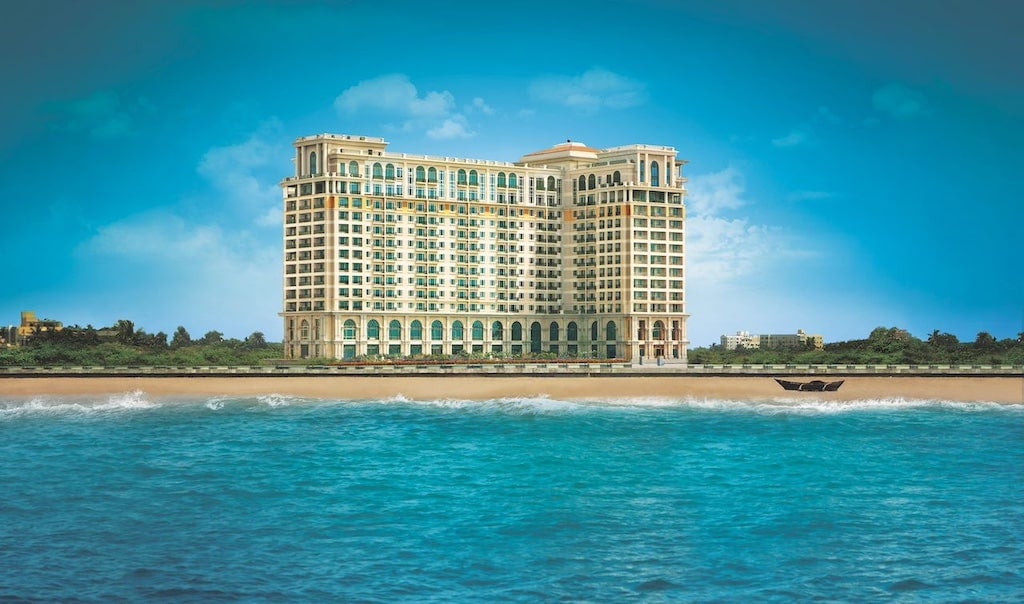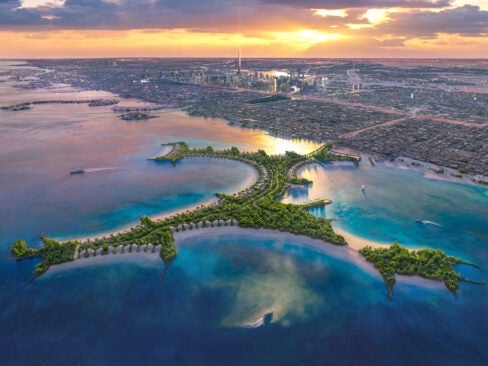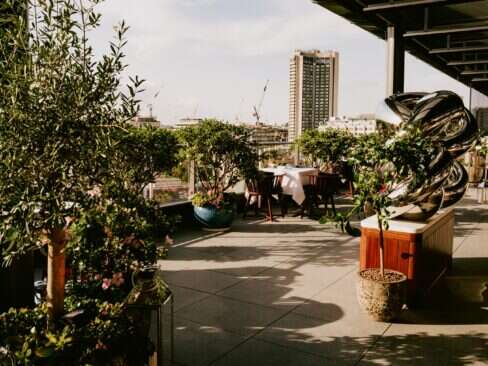Of the three brands invariably cited as representing India’s luxury hotel sector, Taj, Oberoi and Leela, only Leela retains all its operations within the country and, consequently, likes to portray itself as quintessentially Indian.
When Leela was established, its enigmatic founder Captain CP Krishnan Nair – a former officer in the Indian army whose extensive social circle ran from Marlon Brando to the Obamas – was already 65 years old. With echoes of another late-life businessman the “Colonel” Sanders, Nair was also making a big move at a time when he might have been taking it a little easier.
Whilst Nair, whose lunch regimen consisted mostly of vegetables sent over by his wife, consumed South Indian style on a banana leaf, might not have readily sought association with sizzling Southern chicken parts, both the Colonel and the Captain probably serve as talismans for post-pension age entrepreneurial endeavor.
[See also: Discovering India on Uniworld’s Exclusive River Cruise]

The first Leela, named after Nair’s wife, was launched in Mumbai in 1986. Meanwhile, the Leela Palace Chennai didn’t appear until 2013, shortly before Nair passed away in 2014 at the age of 93.
There are currently 11 properties in the portfolio. Burdened by indebtedness (possibly due to the Captain’s avowed philosophy of ‘thinking big’ having gone a bit too big) Leela passed out of family ownership in 2019, though the brand continues to flourish along the unapologetically opulent lines envisaged by its founder.
As the first and only seafront luxury hotel in South India’s largest city, the Leela Palace occupies pole position at the top of Chennai’s hospitality tree and remains the destination of choice for those seeking out the very best in Tamil Nadu’s capital.
Stay
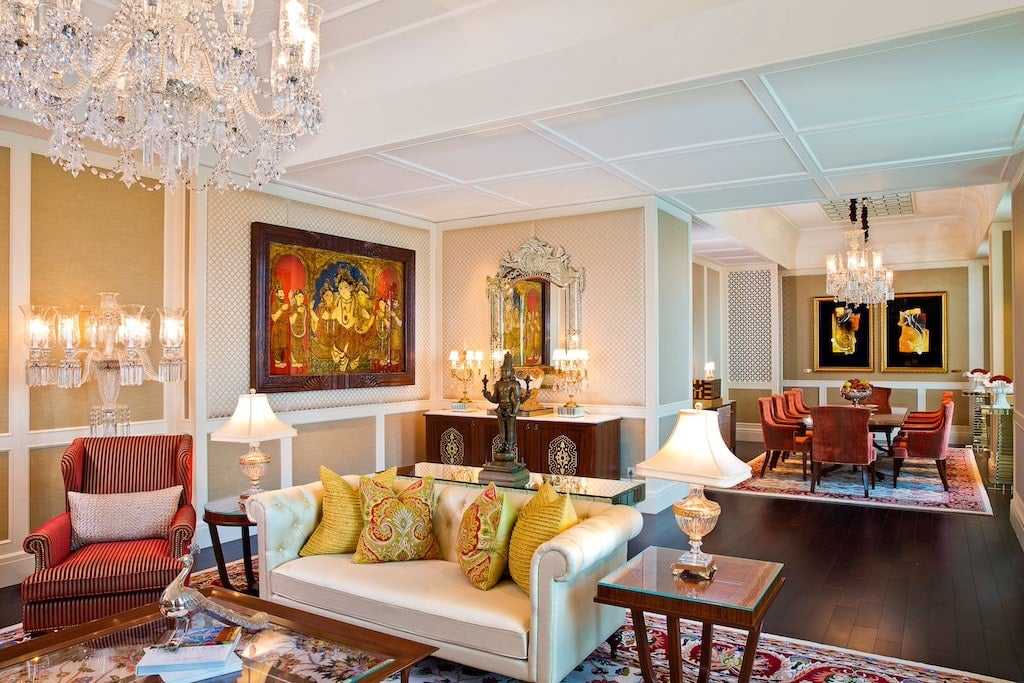
Occupying nearly five acres of what is described as a “beachfront location” (one where the beach isn’t immediately accessible), the 11-story Leela Palace Chennai comprises 326 rooms and suites, and benefits from the beautiful Bay of Bengal views instilling an air of tropical tranquillity into a property that’s also accessible to downtown Chennai.
Here, the philosophy is “Guest Is God”, which was adopted some years back by the Indian Ministry of Tourism as part of its ‘Incredible India’ campaign. This might initially sound as deep and meaningful as “Finger-Lickin’ Good”, but it does, in fact, originate from ancient Sanskrit texts, Atithi Devo Bhava, and is embedded into Hindu culture.
Nobody prostrated themselves on the floor or made offerings in my honor, but from being garlanded with flowers on arrival to solicitously installed back into a BMW 7-series on departure, service was exemplary. Remaining very much a part of its yoga practicing, banana leaf-lunching founder’s ethos, Atithi Devo Bhava is alive and well at the Leela.
[See also: The Best Galapagos Cruises for Intrepid Travelers]
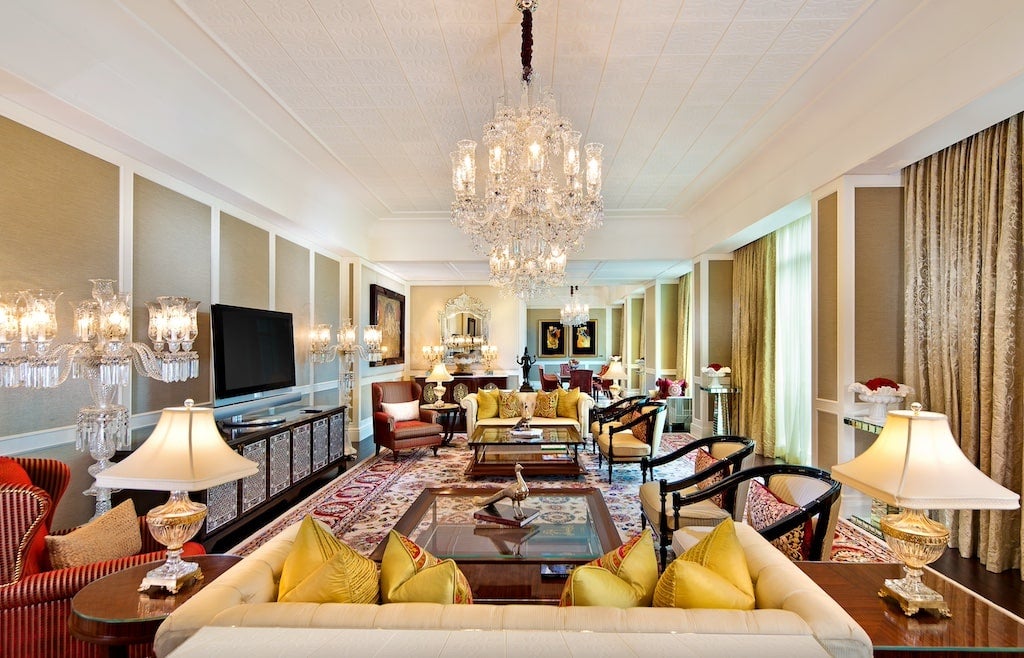
Every evening at sunset, across the large water feature at the hotel entrance, traditional torches are lit and the kombu, a huge blow-horn, is sounded before a performance of Carnatic (South Indian classical) music. The effect is enchanting; as mystical as it is musical, with the performers appearing to float on the water like a Bollywood scene. Life at the Leela does indeed dance to a very Indian tune.
In the huge ballroom (one of the biggest in the city) they were readying for another wedding. As he shuffled tables and chairs about, a staff member revealed that the evening’s festivities would be hosting a meager 1,600 invitees! Weddings, for which the Leela remains one of the most coveted venues, merely serve to inject yet more fabulously unadulterated Indian-ness into everything.
Dine
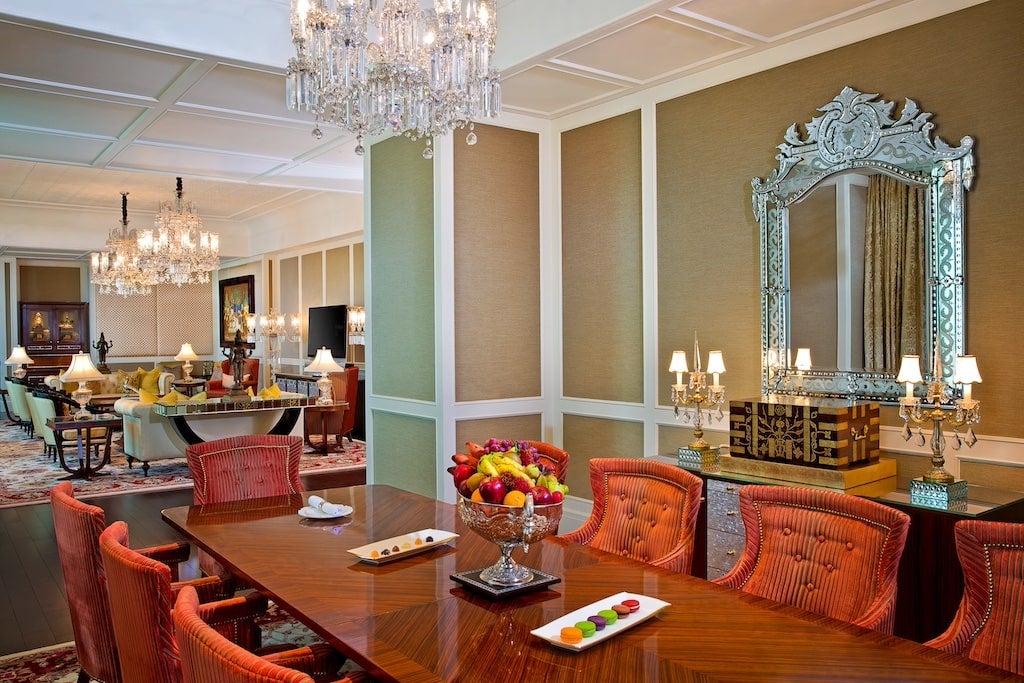
The principal dining venue Spectra, which sits overlooking the ocean, serves as the breakfast portal, navigating a variety of cuisines with admirable dexterity. Among a plethora of possibilities, it extends the opportunity to try a South Indian breakfast – which, to those who’ve never tried one, can bear a striking resemblance to a South Indian dinner.
Personally, I could eat the ubiquitous wafer-thin delicious pan-fried dosas at any time, and where else might you be invited to try the idli of the day? Idlis, being the lentil and rice cakes, are about as commonplace in South India and Sri Lanka as burgers are in Brooklyn. For those seeking more familiar ground, Spectra’s Champagne Sunday Brunch is probably the direction to take.
An elegant Cantonese restaurant, China XO, is regarded as among the best in Chennai, though the preeminent epicurean experience at the Leela is its signature Indian restaurant, Jamavar. Launched at the Bangalore Leela in 2001 by the Captain’s son, Dinesh, Jamavar is an all-embracing homage to the subcontinent’s rich culinary heritage.
As is customary in South India, where the tentacles of vegetarianism reach back across millennia, the menu is presented in split-screen ‘veg’ and ‘non-veg’ format but proffers an array of disarmingly delicious dishes stretching from Kashmir in the far north, to Kerala in the deep south.
In 2016, Dinesh also established an outpost in London’s Mayfair where, overseen by his daughter, Samyukta Nair, it now brandishes a Michelin star. The Chennai iteration of Jamavar, ensconced within a large, glamorous space arranged around an open kitchen, is a long-time favorite of the Chennai haute monde. It is Indian fine dining at its finest.
Design
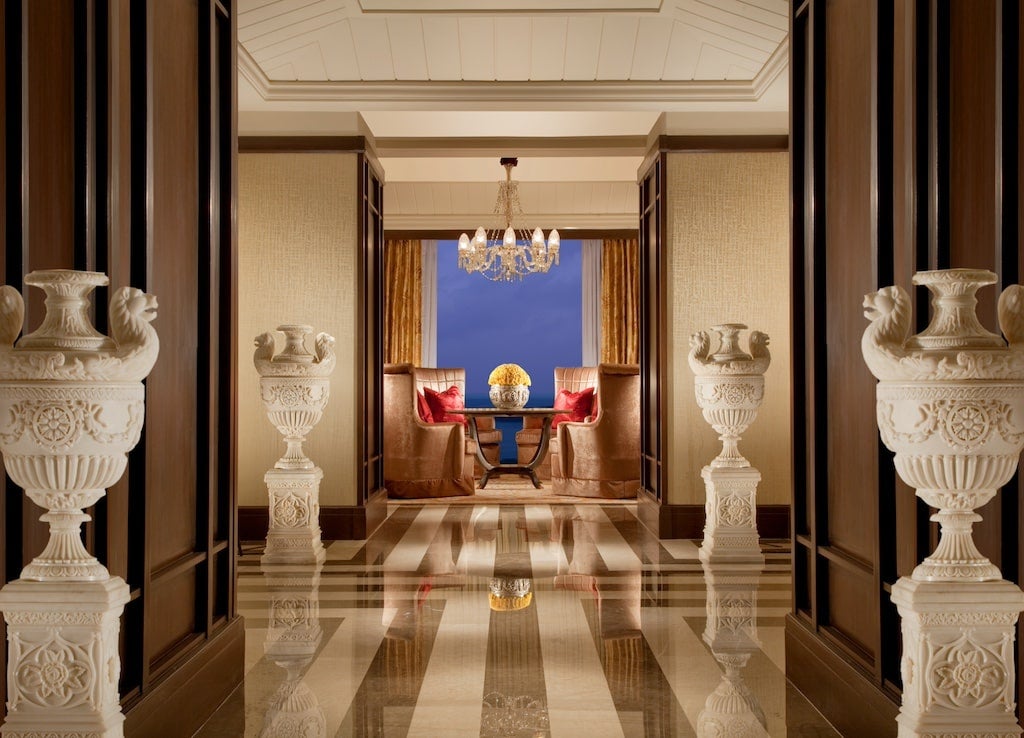
One of the first things to assail the senses on entering the Leela Palace Chennai is flowers. Lots and lots of flowers thread their way through the design palette of the property. From Hindu gods perched atop lotus petals, beaming out beatific smiles to the jasmine braided into schoolgirls’ hair, or the tons of flowers raining down on the $75bn-a-year Indian wedding industry, nothing spells out India quite like flowers. Their prevalence is yet another indication of the lingering presence of the Captain, whose habit was to begin the day with a walk around one of his gardens.
Inside the hotel, an architectural template influenced by Tamil Nadu’s ancient temples and grandiose mansions is immediately apparent. During the period of Nair family oversight, interior design was the responsibility of Dinesh’s wife, Madhu, who bestowed a very sophisticated, very home-grown style statement that still pervades the property.
A rather boring “businessman brown” in some rooms might be hinting at a remodeling, although there are no such concerns with the suites. Encased in a cacophony of color, Leela’s suites are an exuberant, and unreservedly Indian expression of opulence. At nearly 5,000-sq-ft, the Presidential Suite is the largest in South India and as such plays frequent host to heads of state, coming equipped with bulletproof glass and reinforced concrete walls. Indian artworks are evident throughout the property, with curated art tours made available to interested guests.
Relax
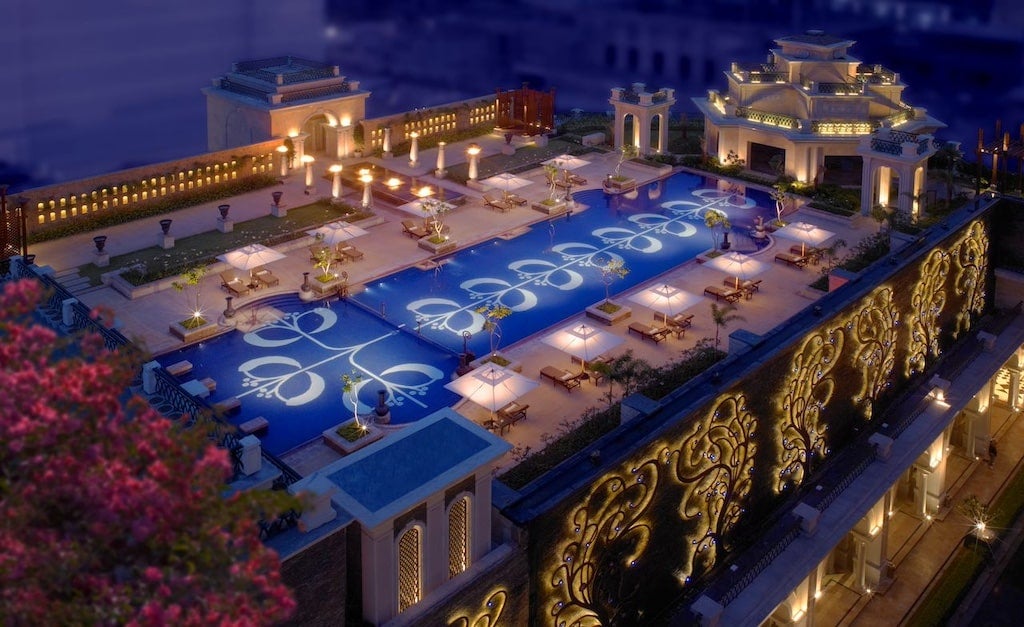
The frustration at not being able to stroll out of the Leela Palace Chennai and feel the sand beneath your toes probably isn’t a concern shared by the many domestically derived guests. South India’s approach to beach culture tends to be more nuanced. Baywatch can mean precisely that; watching the Bay of Bengal – ideally from a discreet distance.
However, the beach visible from the hotel is only a 10-minute drive – just don’t expect Copacabana. A little further away on Kovalam beach, among safe shallow waters, the Bay Of Life teaches surfing and paddleboarding and the hotel will happily arrange a visit.
A more viable route into a languid afternoon swathed in southern sunshine probably lies among the shady spots surrounding Leela’s beautiful Olympic-sized swimming pool. The hotel’s spa is the largest in the city, as is the gym, and proffers a variety of pampering possibilities including ayurvedic treatments.
Explore

Old pictures of Madras depict ordered streets sheltered by overarching neem trees and majestic Indo-Saracenic architecture. Contemporary Chennai, to which the city’s name was changed in 1996, has evolved into a bustling, frenetic metropolis. Hamstrung by high humidity and temperatures regularly straying into the hundreds, it can be challenging but also captivating.
Modern India doesn’t dwell on its centuries-long relationship with the British Empire, but Fort St George, which was founded by the rapacious East India Company in 1639, is the place to delve into the origins of Tamil Nadu’s capital – where there also happens to be a very well-presented museum next to the oldest Anglican church in the country,
Chennai’s largest Hindu temple Kapaleeshwarar should feature on any sightseeing itinerary – though Tamil Nadu’s hinterland harbors a spectacular array of temples for those willing to embrace their inner Indiana Jones and venture out to discover them. One address weary Chennai day-trippers will need is Amethyst, a sprawling horticultural haven in the heart of the city that serves as a restaurant, patisserie, gallery space, fashion emporium and all-round rejuvenating oasis of calm.
Kalakshetra is an oceanside cultural institute just 20 minutes away where it’s possible to attend Bharatanatyam (South Indian classical dance) performances.
Marina Beach, the second-longest urban beach in the world, stretches for miles. In keeping with the ingrained antipathy toward swimming in the sea, it’s actually illegal to do so at Marina – though that’s partly due to the huge numbers of people, which reach over 50,000 a day at weekends. Marina Beach is effectively Chennai at play where anything and everything will be on display at some point. From practitioners of laughing therapy giggling insanely away, to huge family groups cooking lunch, astrologers, horse riding, political demonstrations and serious games of cricket, it’s all as endearingly Indian as it gets. Maybe not the rarefied luxurious Captain Nair kind, but then, isn’t that what the Leela’s there for?
Presidential Suite from 400,000 rupees (approx $4,800) per night plus taxes. Contact reservations@theleela.com, + 1 855 670 3444, theleela.com
[See also: Inside Raffles The Palm Dubai: Restrained Opulence]





